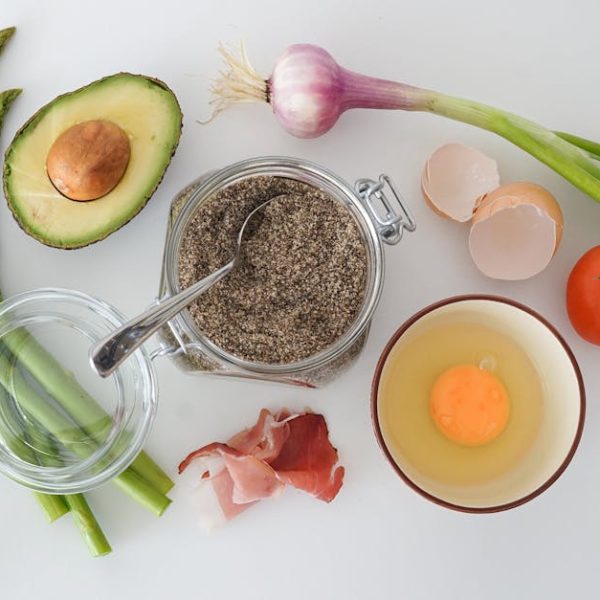In the realm of leafy green vegetables, turnip greens and collard greens command a special place. They’re not just a culinary delight, enjoyed in kitchens worldwide, but a nutritional powerhouse too. Yet, less understood are the key differences between turnip and collard greens. This article aims to demystify these often-overlooked veggies and shed light on their distinct characteristics.
Understanding Turnip Greens
Turnip greens, the lush, leafy tops of the turnip plant, are a staple in many cultures. They thrive in temperate climates, where their cultivation dates back over 4,000 years. They’re savored for their slightly bitter, yet unique flavor.
Crucially, turnip greens are nutrient-dense powerhouses. They pack a potent punch of vitamins A, C, E, and K, along with essential minerals such as calcium, iron, and magnesium. Notably, they’re also high in dietary fiber, making them an excellent addition to any diet.
Pro Tip: Turnip greens are particularly beneficial for bone health, owing to their high vitamin K content. Also, they promote vision and immunity, thanks to Vitamin A and E, respectively.
It’s important to select turnip greens with bright, crisp leaves. They can be cooked in a multitude of ways – steamed, boiled, sautéed, or even used raw in salads.
Understanding Collard Greens
Originating in the Eastern Mediterranean, collard greens belong to the same cruciferous family as kale and cabbage. They’re typically larger and heartier than turnip greens, with a distinct, slightly bitter and smoky flavor.
Just like turnip greens, collard greens are nutritional dynamos, rich in vitamins A, B6, C, and in minerals like calcium and iron. They also come with a high dietary fiber content, promoting digestive health.
Pro Tip: Regular consumption of collard greens may support heart health, aid in digestion, and strengthen the immune system, thanks to their nutrient-dense profile.
To get the most out of collard greens, choose the ones with firm, vibrant-looking leaves. Don’t disregard the stems—they’re pleasantly crunchy and a worthy addition to stir-fries and stews.
Distinguishing Between Turnip and Collard Greens
While these two mighty greens share many similarities, some key aspects set them apart. Turnip greens tend to have a softer texture and a sweeter, yet bitter undertone, compared to the more robust and smoky collard greens.
To help clear the haze, here’s a comparison table highlighting some fundamental differences and parallels:
“`
| Turnip Greens | Collard Greens | |
|---|---|---|
| Taste | Slightly bitter | Bitter, Smoky |
| Texture | Soft | Robust |
| Nutrient Profile | High in vitamins A, C, E, K, and minerals like calcium and iron | Rich in vitamins A, B6, C, and minerals like calcium and iron |
| Usage | Versatile in cooking | Widely used in Southern American, African and Brazilian cuisines |
“`
In conclusion, one is not a direct substitute for the other. It’s wise to experiment and choose based on personal taste preference and specific nutritional needs. Both are nutritional powerhouses and can add a vibrant touch of green to your plate.
Culinary Uses of Turnip and Collard Greens
Turning our attention to the kitchen, turnip and collard greens both bring a unique flavor profile and nutritional value to meals.
Turnip greens are a common ingredient in many traditional dishes, especially in Southern American cuisine. They can be simmered down with a ham hock for a comfort soup, or added to a casserole for a hearty and healthy side. Thanks to their versatility, they also fit perfectly in salads, stir-fry, and even smoothies!
Pro Tip: Try incorporating turnip greens into pasta dishes, omelettes, or sautéed as a side for grilled meats. Their slightly sweet and bitter flavor complements a range of meals.
Meanwhile, collard greens, with their robust texture, handle heat well, making them excellent for slow cooking methods. They’re a culinary staple in Southern U.S., African, and Brazilian cuisines, often simmered with onions, garlic, and smoked meats. Alternatively, you can enjoy them sautéed, braised, or even raw in a peppery slaw.
Pro Tip: For a nutrient-dense meal, consider using collard greens as a low-carb substitute for bread or tortillas in wraps.
Health Benefits and Risks Associated with Turnip and Collard Greens
Consumption of turnip and collard greens is linked to numerous health benefits, from heart health to bone strength, and even digestive wellness. Their richness in dietary fiber aids in digestion, while the abundance of antioxidants support immunity. Moreover, the substantial amounts of vitamins K and A found in these greens are critical for bone health and eye health, respectively.
That said, it’s important to note potential risk factors. People with kidney issues should consume these greens sparingly due to the high potassium content. They also contain vitamin K, which can interfere with blood-thinning medication. Additionally, cruciferous vegetables like these may cause bloating in some people.
Best Practices Checklist:
- Always thoroughly wash your greens before consumption.
- Rotate between different types of green vegetables to benefit from a varied nutrient profile.
- Consume in moderation if you have kidney issues or are on blood-thinning medication.
- Monitor your body’s response. If you experience bloating, consider reducing intake or trying different preparation methods.
Pro Tip: With the wide range of nutrients that turnip and collard greens offer, strive to incorporate both into your diet. Variety is the key to a balanced diet, and these leafy greens are sure to bring both flavor and health benefits to your table.
To wrap up, both turnip and collard greens deserve a place in your diet. Their nutritional benefits, coupled with their versatile culinary uses, make them a must-try. So the next time you’re at the farmer’s market or grocery store, don’t hesitate to grab a bunch of these power-packed greens!
Key Takeaway:
- The article explains the key differences between turnip and collard greens, focusing on their taste, texture, nutritional benefits, and culinary uses.
- Both types of greens offer high amounts of vitamins, such as vitamin A, C, E (for turnip greens) and B6 (for collard greens), and essential minerals, including calcium, iron, and magnesium.
- Although linked to several health benefits, people with certain health conditions like kidney issues and those on blood-thinning medication should consume these greens with caution.
Remember, incorporating a variety of greens in your diet can be incredibly beneficial for your overall well-being. Whether it’s turnip greens or collard greens, their rich nutrient profile can help enhance your diet and health, just ensure to consume them in moderation if you have specific health conditions.
FAQs
Q: Can turnip greens and collard greens be used interchangeably in recipes?
A: While you can experiment, their distinct taste and texture may impact the final dish. Turnip greens have a slightly sweeter and softer characteristic, while collard greens are more robust and smoky.
Q: Are turnip greens and collard greens suitable for a vegan diet?
A: Absolutely! Both types of greens are plant-based and perfectly suitable for a vegan diet.
Q: Are these greens safe for pregnant women?
A: Yes, both turnip and collard greens are rich in nutrients, including folic acid, that are essential for pregnant women. However, it is always advisable to consult with your healthcare provider.
Q: How often should I consume turnip and collard greens?
A: The frequency of consumption depends on your personal diet and health conditions. Both greens are incredibly nutrient-dense and can be consumed regularly, unless recommended otherwise by a healthcare professional.
Q: Are these greens suitable for individuals with diabetes?
A: Yes, turnip and collard greens are low in carbohydrates and high in fiber, making them an excellent addition to a diabetes-friendly diet.
Please feel free to share this article with others who might find it helpful. For more insights on diet and nutrition, continue exploring our website.






